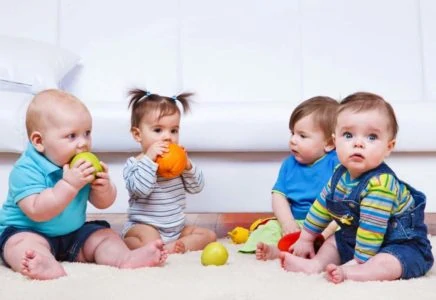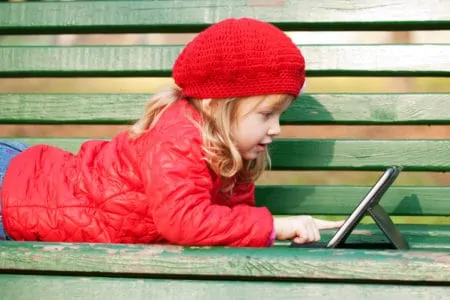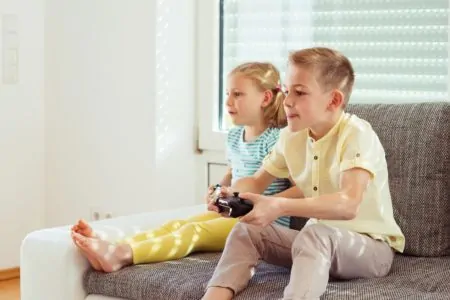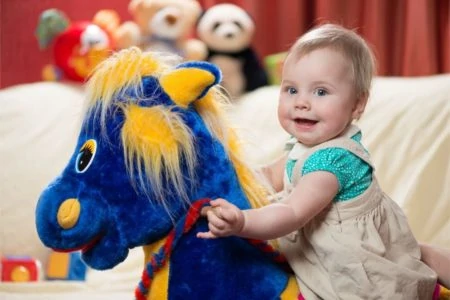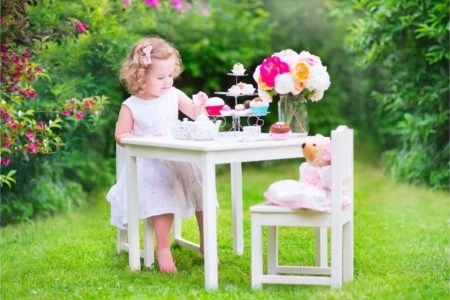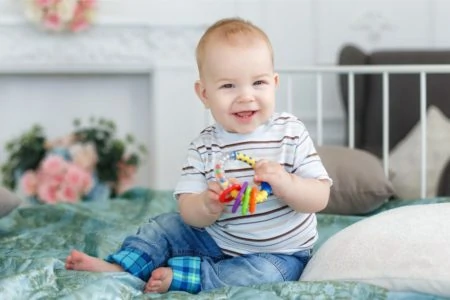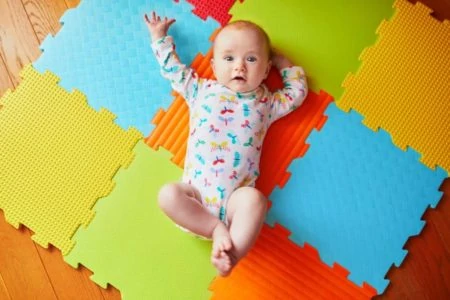Life with a newborn is often a blur of feeding, sleeping, and diaper changes. But as you settle into a routine, you might start wondering: when does the actual fun begin? When do babies start playing with toys?
While every child develops on their own timeline, there are general milestones you can look out for. Knowing these stages helps you choose the right gear to support their growth.
In this article, we will break down how infants learn to play and which toys spark joy during those early months of exploration.
Key Takeaways
- 0 to 1 Month: Play is mostly observational; babies track faces and high-contrast objects.
- 2 to 3 Months: Hand-eye coordination improves, leading to batting at toys and enjoying floor gyms.
- 4 to 6 Months: Babies begin reaching, grasping, and exploring objects by putting them in their mouths.
- Safety First: Always choose age-appropriate toys that are free of small parts to prevent choking hazards.
When Do Babies Begin To Play with Toys?
All babies love to play, but their definition of “play” changes rapidly in the first year. Initially, they are simply observers. Over time, they become active participants.
Here is a breakdown of developmental stages and the best tools for the job.
1. Birth to One Month
A newborn’s world is small. They can generally only focus on objects 8 to 10 inches away. While their vision is blurry, they will try to track your face or high-contrast objects (1).
You might notice the “palmar grasp” reflex. If you place a finger, rattle, or lock of hair in their palm, they will clamp down tight. This isn’t intentional play yet; it is an instinct that prepares them for voluntary grasping later on (2).
During this stage, interaction is key. You are their best toy. Talk to them, sing off-key, and make silly faces. They are learning to read expressions and listen to tone.
If you want to introduce gear, try smooth rings or rattles. Even if they cannot hold them perfectly, the sound helps them track movement.
2. Two to Three Months
Now things get interesting. Your baby’s hands will start to unfold, and they will gain better control over their arms. Hand-eye coordination begins to kick in, meaning they might start swatting or “batting” at hanging objects (3).
Toys that make noise or feature bright colors are hits at this age. Since red is the first color they differentiate, look for bold primary colors.
Try a baby gym with hanging toys. This encourages them to lift their head and strengthen their neck muscles. You can also use soft activity blocks or wrist rattles. Just be careful with hard plastic toys right now; babies lack motor control and can easily bonk themselves in the face.
3. Four to Six Months
By four months, the “batting” turns into grabbing. Your baby will reach for toys, pass them from one hand to the other, and inevitably put them straight into their mouth.
Mouthing is a primary way babies explore texture and taste. Because of this, safety is your top priority.
Ensure all toys are too large to swallow, have no loose parts, and are non-toxic. Soft blocks, teething rings, and textured balls are excellent choices. They are easy to grip and safe to chew on.
What Should I Look For?
When shopping for early development toys, keep these factors in mind to ensure safety and engagement:
- High Contrast: Newborns see black and white best until about 8 weeks. Bold patterns help stimulate vision and focus.
- Auditory Feedback: Items like rattles, crinkle paper, and musical mobiles teach cause and effect. If they shake it, it makes a sound. Just keep the volume low to protect sensitive ears.
- Movement: Babies track motion early on. Wind chimes or mobiles that move gently catch their eye better than stationary objects.
- Texture Variety: Fabric books with nubby, smooth, or crinkly pages encourage tactile exploration.
- Overhead Options: Suspended toys encourage reaching and core strength, which are vital for eventual crawling.
FAQs
In Conclusion
Every baby is unique. Some will grab a rattle at three months, while others might prefer to just watch the world go by until later. Both are perfectly normal.
The most important thing is to ensure your baby is well-rested and fed before trying to play. Watch for their cues; if they toss the toy or get fussy, they are telling you they are done (4). Enjoy these early moments of discovery, because they truly do fly by.
